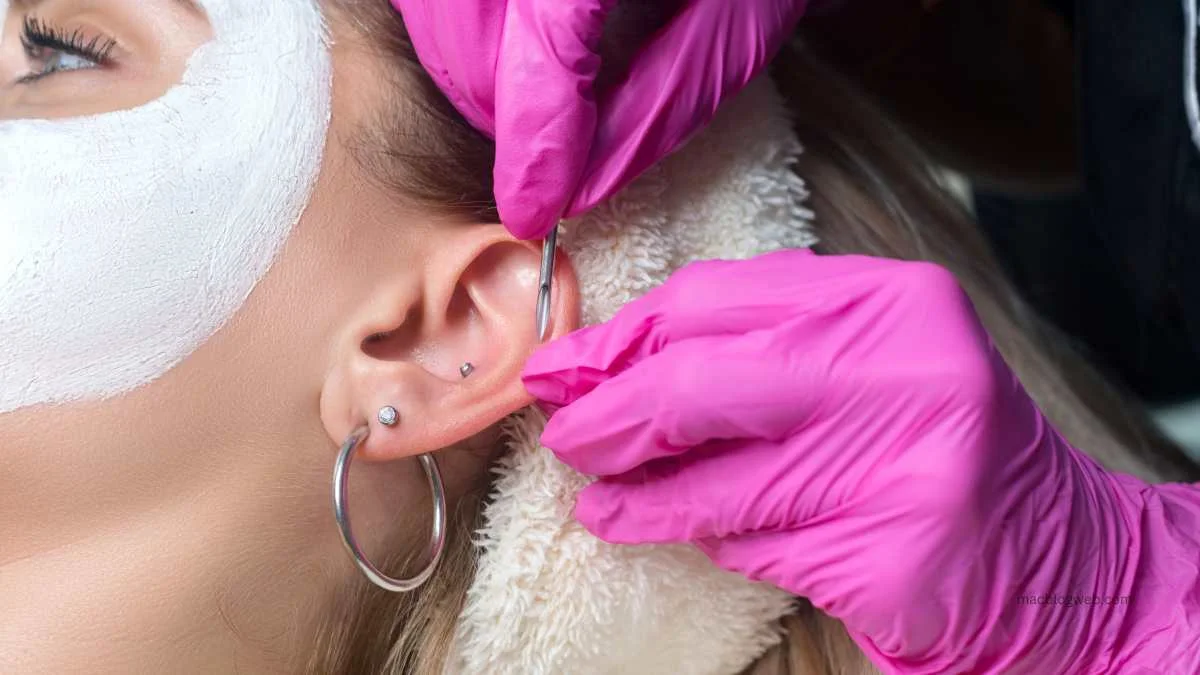In the diverse world of body modifications, ear piercings stand out as both traditional and innovative, depending on the nature and placement of the piercing. Among these, the daith piercing has gained popularity not only for its aesthetic appeal but also for its purported health benefits, which remain scientifically unverified. This article delves deep into the daith piercing, exploring its origins, the procedure involved, healing and care, potential benefits, and common jewelry types associated with this unique form of ear piercing.
Origins of Daith Piercing
The daith piercing was brought into the limelight in the early 1990s through Fakir Musafar’s magazine “Body Play.” Although not widely known outside of piercing enthusiast circles, this distinctive piercing owes its name to a clever bit of wordplay and perceived ingenuity. The term “da’at,” which means “knowledge” in Hebrew, was chosen to commend the piercer’s skill and knowledge required to accurately perform this piercing. Credited to Erik Dakota, a well-known figure in the piercing world, the daith piercing requires a deep understanding of ear anatomy to successfully and safely pierce the ear’s innermost cartilage fold, the crus of the helix.
The Piercing Process
The daith piercing is typically performed using a straight, hollow needle. The process involves the following steps:
- Consultation and Planning: Like any other piercing, a consultation with a professional piercer who will explain the procedure, potential risks, and aftercare is essential. This is also the time to discuss any allergies or health conditions that might affect the piercing process or healing.
- Preparation: The area around the ear is cleaned and disinfected. The piercer marks the exact spot on the crus of the helix to ensure precision.
- Piercing: A straight hollow needle is used to pierce through the cartilage. This part of the ear is thick and can be quite painful to pierce, so it’s important for the procedure to be done quickly and professionally.
- Jewelry Insertion: Immediately after the piercing, a piece of jewelry — typically a captive bead ring — is inserted. This type of jewelry helps facilitate healing.
Healing and Aftercare
Healing a daith piercing can take time, usually ranging from six to nine months. Proper aftercare is essential to avoid infection and support the healing process. Important elements of daith piercing aftercare include:
- Cleaning: Regularly clean the piercing with saline solution or piercing aftercare sprays. It’s important not to over-clean as this can irritate the piercing.
- Avoiding Irritation: Keep hair, headphones, and telephones away from the piercing to prevent irritation and bacterial transfer.
- Sleeping Considerations: Try to sleep on the opposite side to where the piercing is done to avoid pressure and irritation.
- Monitoring: Keep an eye on the piercing for signs of infection or complications, such as excessive redness, swelling, or discharge. If any of these occur, consult a healthcare professional.
Debunking Health Claims
There are anecdotal claims that daith piercings can alleviate migraine headaches and anxiety. These claims suggest that the piercing can stimulate acupressure points within the ear, much like acupuncture. However, there is no scientific evidence to support these claims, and any relief experienced by individuals is generally considered to be a result of the placebo effect. Nonetheless, many choose to get a daith piercing solely for its potential health benefits, regardless of the lack of clinical evidence.
Jewelry Options
The most common type of jewelry used for daith piercing is the captive bead ring, which is easy to insert and conducive to healing. Other options include:
- Barbells: Curved or circular barbells can also be used and may be more comfortable for some people.
- Clickers: Hinged ring designs that are easy to open and close, offering both functionality and style.
Conclusion
The daith piercing is a distinctive and stylish choice for those looking to add a unique element to their aesthetic. While it’s important to approach claims of health benefits with skepticism, there’s no denying the beauty and appeal of this piercing. As with any piercing, choosing a reputable piercer, following proper aftercare, and being patient during the healing process are key to ensuring that your daith piercing is both safe and successful. Whether for style or the allure of potential health benefits, the daith piercing is a fascinating addition to the world of body art.








